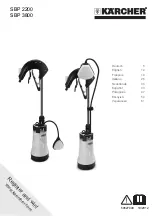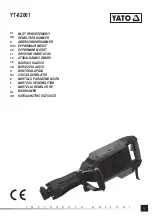
Instruction Book
Page 60
Effective: May 2006
I.B. 2C12060H08
For more information visit: www.EatonElectrical.com
SECTION 6: INSPECTION AND
MAINTENANCE
6-1 GENERAL
FAILURE TO INSPECT, CLEAN AND MAINTAIN CIR-
CUIT BREAKERS CAN REDUCE EQUIPMENT LIFE
OR CAUSE THE EQUIPMENT NOT TO OPERATE
PROPERLY UNDER FAULT CONDITIONS. THIS
COULD RESULT IN EQUIPMENT DAMAGE, BODILY
INJURY OR EVEN DEATH.
INSPECTION AND MAINTENANCE PROCEDURES
SHOULD BE CARRIED OUT ONLY BY PERSONNEL
FAMILIAR WITH THE HAZARDS ASSOCIATED WITH
WORKING ON POWER CIRCUIT BREAKERS. ADDI-
TIONALLY, THEY SHOULD BECOME FAMILIAR
WITH THE SPECIFICS ASSOCIATED WITH TYPE
MAGNUM DS CIRCUIT BREAKERS AS PRESENTED
IN THIS INSTRUCTION BOOK.
Magnum Circuit Breakers are “Top of the Line” equip-
ment. This means they are manufactured under a high
degree of quality control, with the best available materi-
als and with a high degree of tooling for accuracy and
parts interchangeability. Design tests and actual installa-
tion experience show them to have durability well
beyond minimum standards requirements. However,
because of the variability of application conditions and
the great dependence placed upon these circuit break-
ers for protection and the assurance of service continu-
ity, inspection and maintenance activities should take
place on a regularly scheduled basis.
Since maintenance of these circuit breakers consists
mainly of keeping them clean, the frequency of sched-
uled inspection and maintenance depends to some
degree on the cleanliness of the surroundings. Cleaning
and preventive measures are a part of any good mainte-
nance program. Plant operating and local conditions can
vary to such an extent that the actual schedule should
be tailored to the conditions. When the equipment is
subject to a clean and dry environment, cleaning is not
required as frequently as when the environment is
humid with a significant amount of dust and other for-
eign matter.
It is recommended that maintenance record sheets be
completed for the equipment. Careful and accurate doc-
umentation of all maintenance activities provides a valu-
able historical reference on equipment condition over
time.
6-2 GENERAL CLEANING RECOMMENDATIONS
Circuit breaker cleaning activities should be a part of an
overall activity that includes the assembly in which the
circuit breaker is installed. Loose dust and dirt can be
removed from external surfaces using an industrial qual-
ity vacuum cleaner and/or lint free cloth. Unless other-
wise indicated, never use high pressure blowing air,
since dirt or foreign objects can be driven into areas,
such as the breaker mechanism, where additional fric-
tion sources could create problems. Never use a wire
brush to clean any part of the circuit breaker.
6-3 WHEN TO INSPECT
Do not wait for specific scheduled periods to visually
inspect the equipment, if there are earlier opportunities.
If possible, make a visual inspection each time a circuit
breaker compartment door is opened, and especially
when a circuit breaker is withdrawn on its compartment
extension rails. This preventive measure could help to
avoid future problems.
Industry standards for this type of equipment recom-
mend a general inspection and lubrication after the
number of operations listed in Table
6.1
of this section.
This should also be conducted at the end of the first six
months of service, if the number of operations has not
been reached.
!
WARNING
!
CAUTION
Breaker Frame Size
Interval
➀
(Breaker Cycles)
800 amperes and below
1750
Between 800 and 3000 amperes
500
3000 amperes and above
250
Table 6.1 Inspection Frequency
➀
Breaker Cycle = one no load open/close operation
www
. ElectricalPartManuals
. com













































